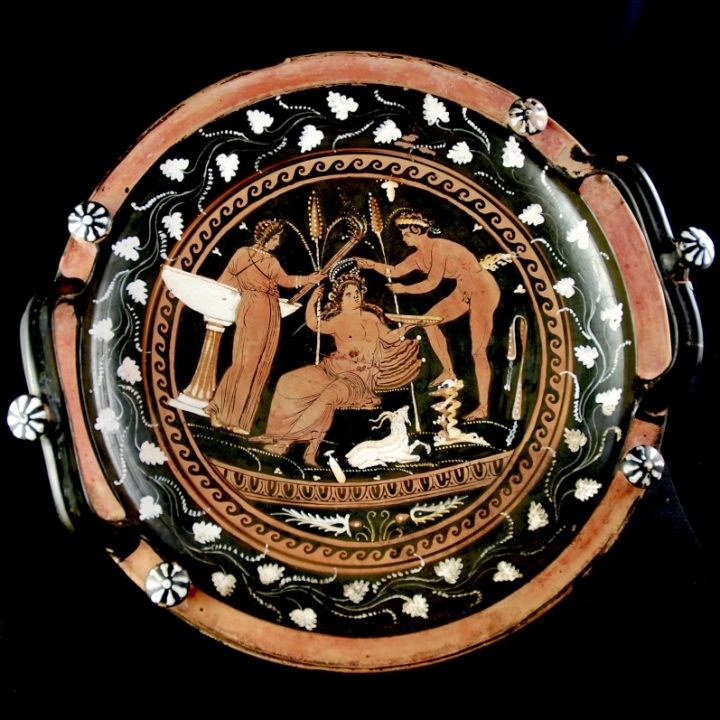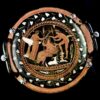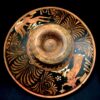Apulian Knob-Handled Dish of the Underworld-Painter
Culture: Greek/Apulian
Period: 330-320 B.C.
Material: Terracotta
Dimensions: 38 cm diameter
Price: Sold
Ref: 2134
Provenance: Collection Derwa Arthur Bergilers, Belgium. Later Christie’s auction on 7 November 2001, lot 428. Thence gallery Cahn, Basel.
Condition: The patera is intact and in an excellent condition, except for some minor repair on one handle, a short, probably ancient stress crack, and a small chip on the rim.
Description: A magnificent knob-handled dish (Patera) of the Underworld-Painter. Dionysus seated in three-quarter view to left, holding a thyrsos in his right hand and a phiale in his left. He is looking upwards to a Satyr, who stands on the right on a rocky edge, leaning on a thrysos and crowning the God with a wreath. Below a lying goat and an alabastron in yellow-white. Left a maenad in rear view. She puts her left arm on the rim of a washbasin. With her right hand holding a blazing torch above Dionysus’ head. The scenery is framed by an ovolo-band, in the segment below a floral motive. The central scene is surrounded by a band of waves. In the curvature of the plate, splendidly painted wine leaves in added white.
Reverse: A seated Eros holding a cista. A seated woman with a cista in her right hand and a mirror in her left. Palmettes-complex below the handles. The vessel has six knobs painted as blossoms. Four are attached on the rim, two on the handles. The goat, an important symbolic animal of Dionysus, can be interpreted as the nymph Amalthea, metamorphosed into a goat, who nourished and raised the god when he was a child. The Underworld-Painter was an Apulian vase painter and important representative of the opulent style of the Lower Italian vase paintings. His works are dated to the second half of the 4th century B.C. The Underworld-Painter is considered to be the successor of the Dareios-Painter, in whose workshop the former started his career, and either took over or at least decisively shaped it as an influential worker. He received his name because of a vase where he depicted Hades and Persephone in their palace in the underworld.





